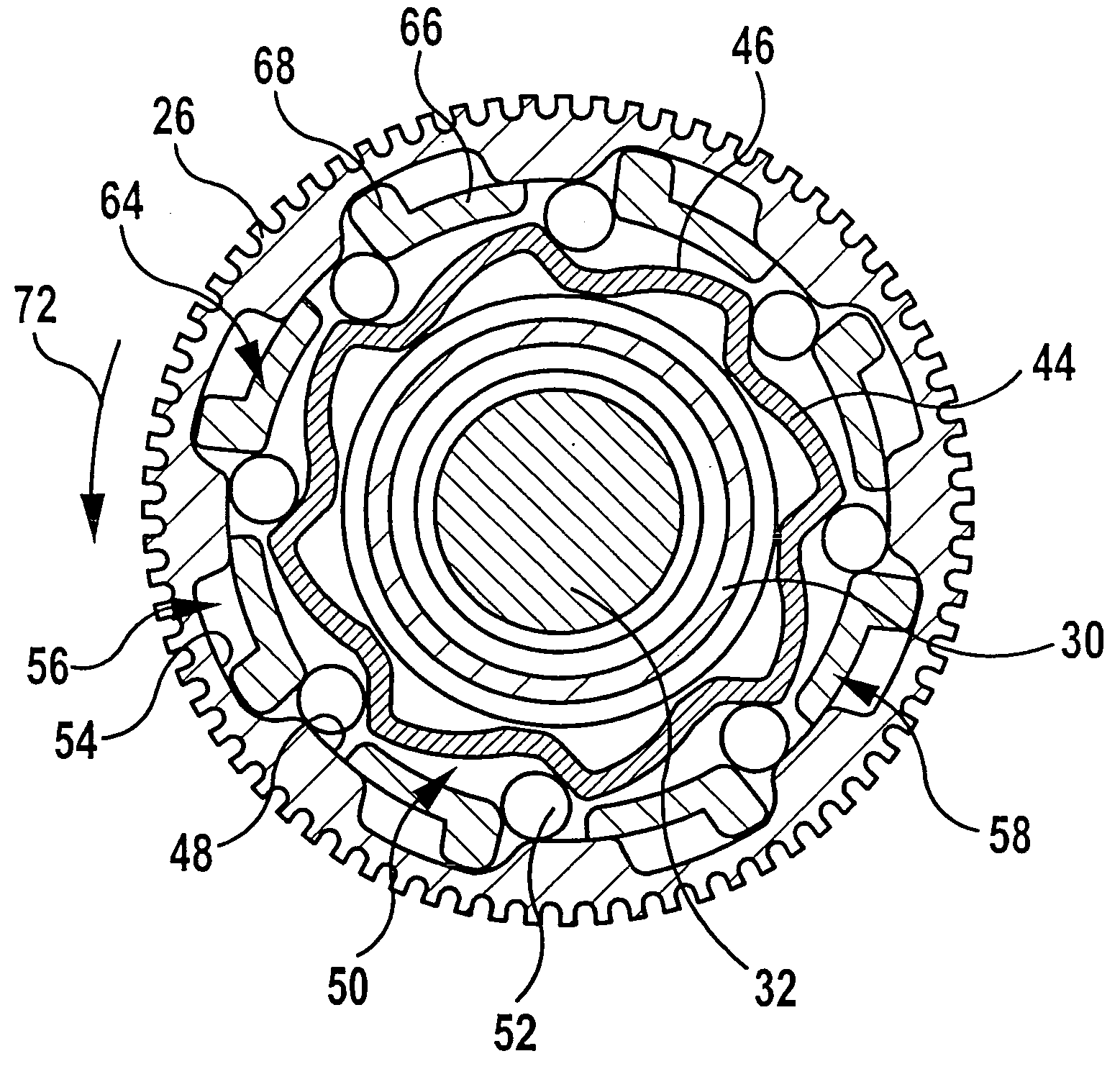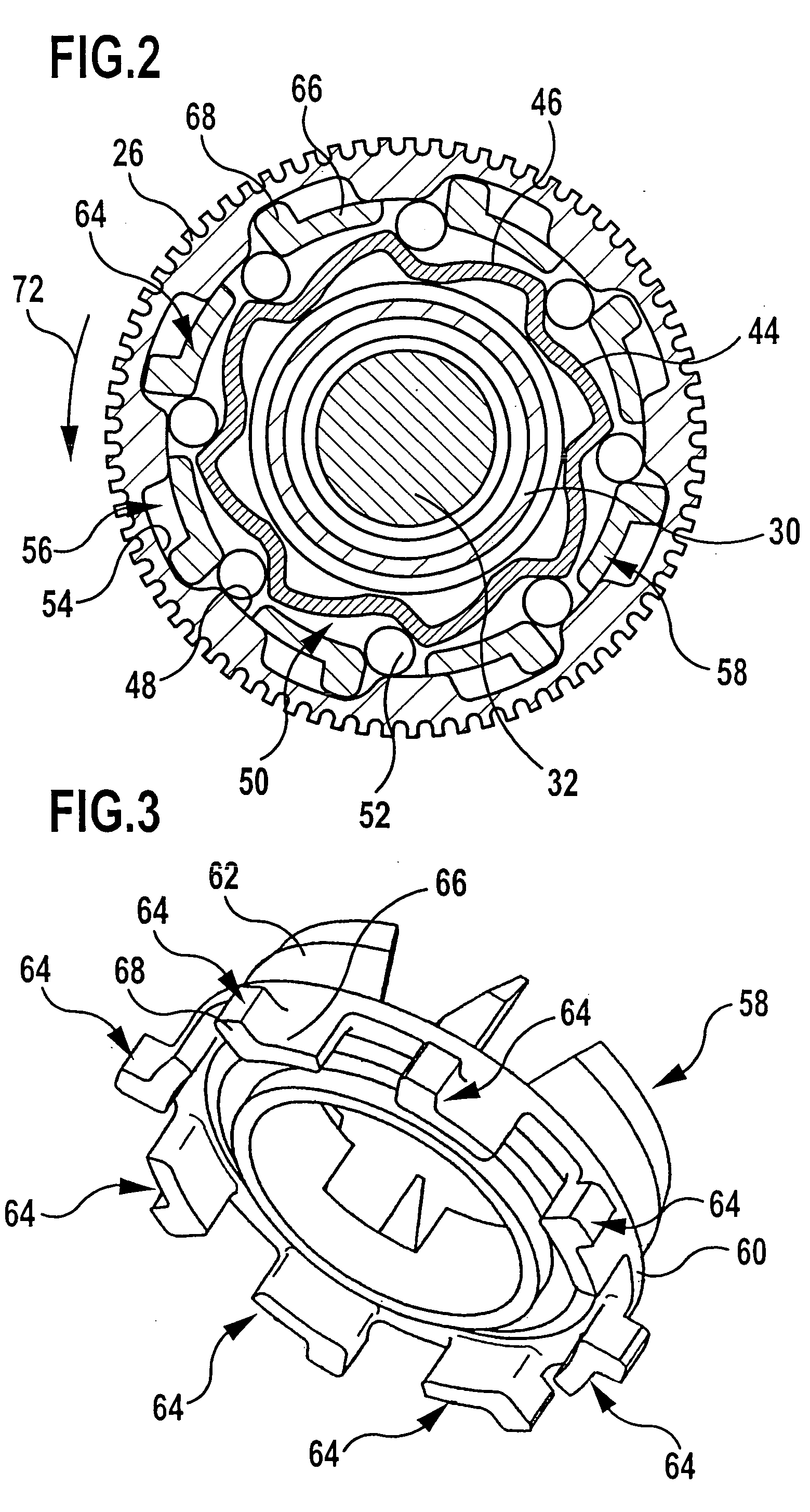[0010] As a result of this, the coupling element transfers from its coupling position into a non-coupling position and the transfer of torque between the drive element and the
driven element is interrupted. A limitation of the torque to be transferred is ensured by the overload coupling in a constructionally simple manner, wherein the critical limiting value of the torque can be predetermined by the
spring force, with which the overload element is acted upon in the direction of rotation. In accordance with the invention, the overload element is arranged between the coupling element and the alternative space in a coupling position of the coupling element. This has the
advantage that the access of the coupling element to the alternative space is blocked by the overload element and is released when an overload occurs. The overload coupling is therefore characterized by a reliable mode of operation.
[0011] In a preferred embodiment, the alternative space adjoins the intermediate space radially on its outer side. Since the coupling element, like the drive element and the
driven element, executes a rotational movement during the transfer of torque, the arrangement of the alternative space on the radially outer side has the
advantage that the transfer of the coupling element into the alternative space can be achieved by means of the
centrifugal force acting on the coupling element. The arrangement of the alternative space on the radially outer side also has the
advantage that the at least one coupling element is held automatically in the alternative space when an overload occurs on account of the
centrifugal force acting on the coupling element without additional retaining elements needing to be used for this purpose.
[0017] It has proven to be favorable when the
torsion spring can be releasably connected to the drive element or driven element. This makes it possible, depending on the desired limiting value for the torque to be transferred, to use a
torsion spring adapted to this limiting value.
[0019] The intermediate part preferably forms an intermediate
flange and the at least one overload element is preferably secured to the intermediate
flange in the form of an axially protruding projection. This facilitates a configuration of the overload coupling in a constructionally simple manner such that the drive element and the driven element are arranged in a radial direction so as to be offset relative to one another and to form an annular space between them, into which the at least one overload element dips in that this is secured to the intermediate
flange of the intermediate part in the form of an axially protruding projection. The intermediate part may, in this case, be positioned in axial direction to as to be offset in relation to the drive element and / or the driven element.
[0020] The driven element is preferably of a star-shaped configuration and has a plurality of stop surfaces which are aligned at an angle to the direction of rotation of the coupling element and on each of which a coupling element abuts in the coupling position. In this respect, it has proven to be particularly favorable to design the driven element with a shell surface which is configured essentially in the shape of saw teeth and on which several coupling elements abut in their coupling position, wherein the coupling elements can be positioned at a distance in relation to the driven element when an overload occurs by transferring into their alternative position so that the coupling elements can be freely rotated relative to the driven element and, as a result, a transfer of torque is prevented.
[0025] The floor cleaning device, for which the cleaning head according to the invention is provided, may be designed as a brush
vacuum cleaner, with the aid of which a floor surface to be cleaned can be brushed and vacuumed at the same time. In this respect, it is of particular advantage when the
drive motor drives not only a suction fan of the floor cleaning device but also its brush roller. The brush roller is driven so as to execute a rotational movement about a brush axis of rotation. If the brush roller is blocked or obstructed, the use of the overload coupling enables the drive motor to continue to be driven uninterrupted and without any motor overload occurring. The operation of the suction fan is, consequently, not influenced by any obstruction or blocking of the brush roller.
 Login to View More
Login to View More  Login to View More
Login to View More 


